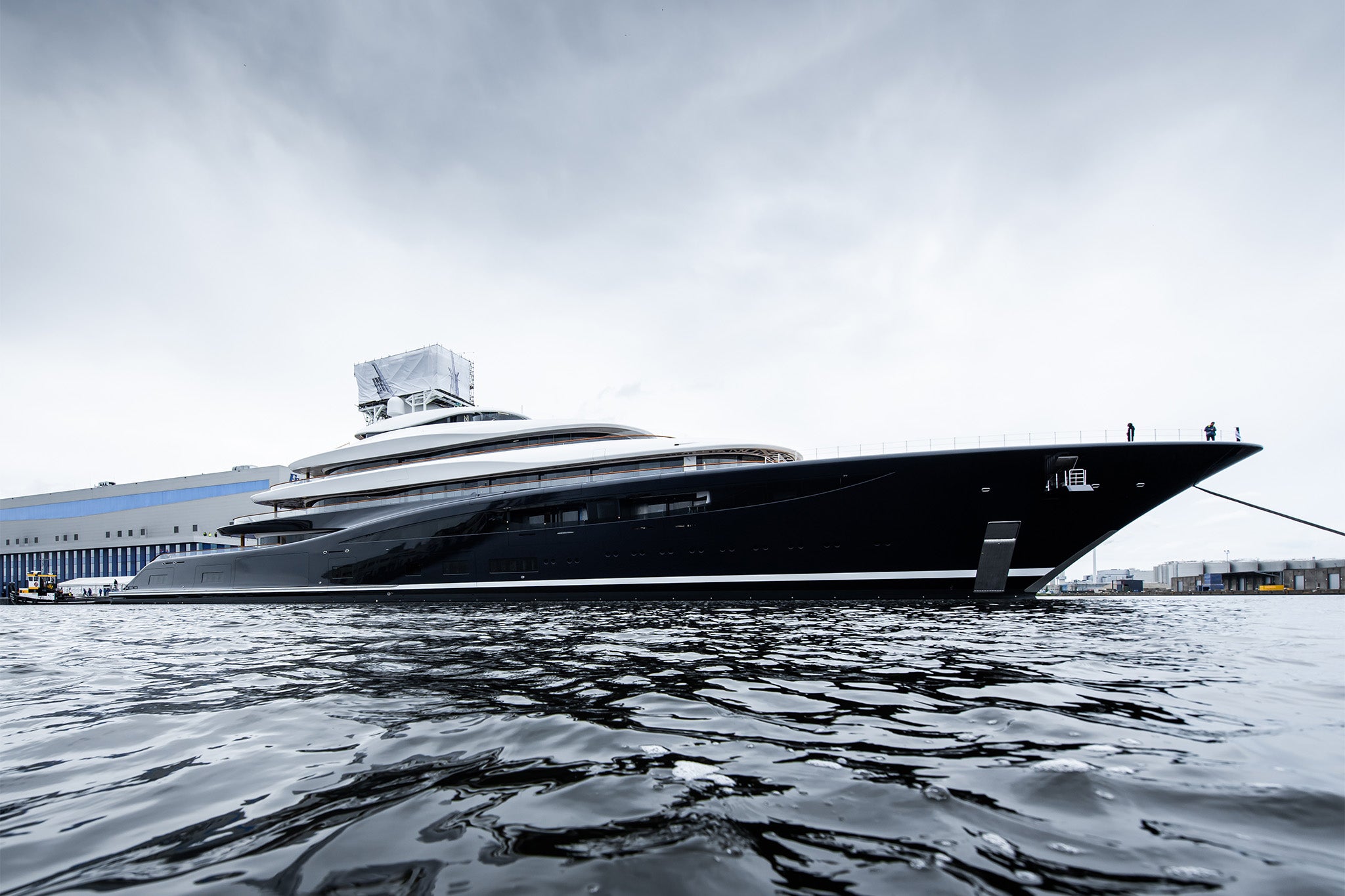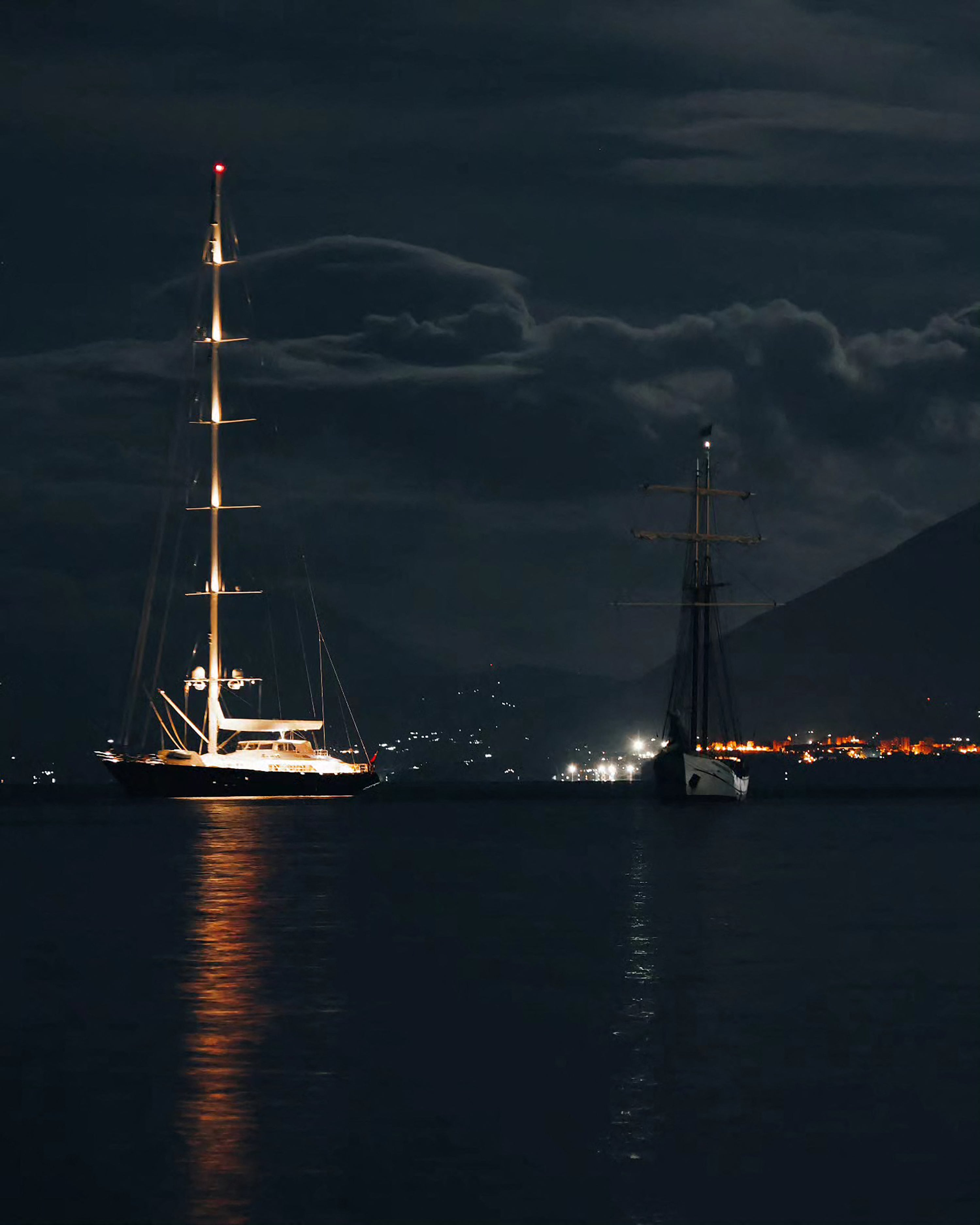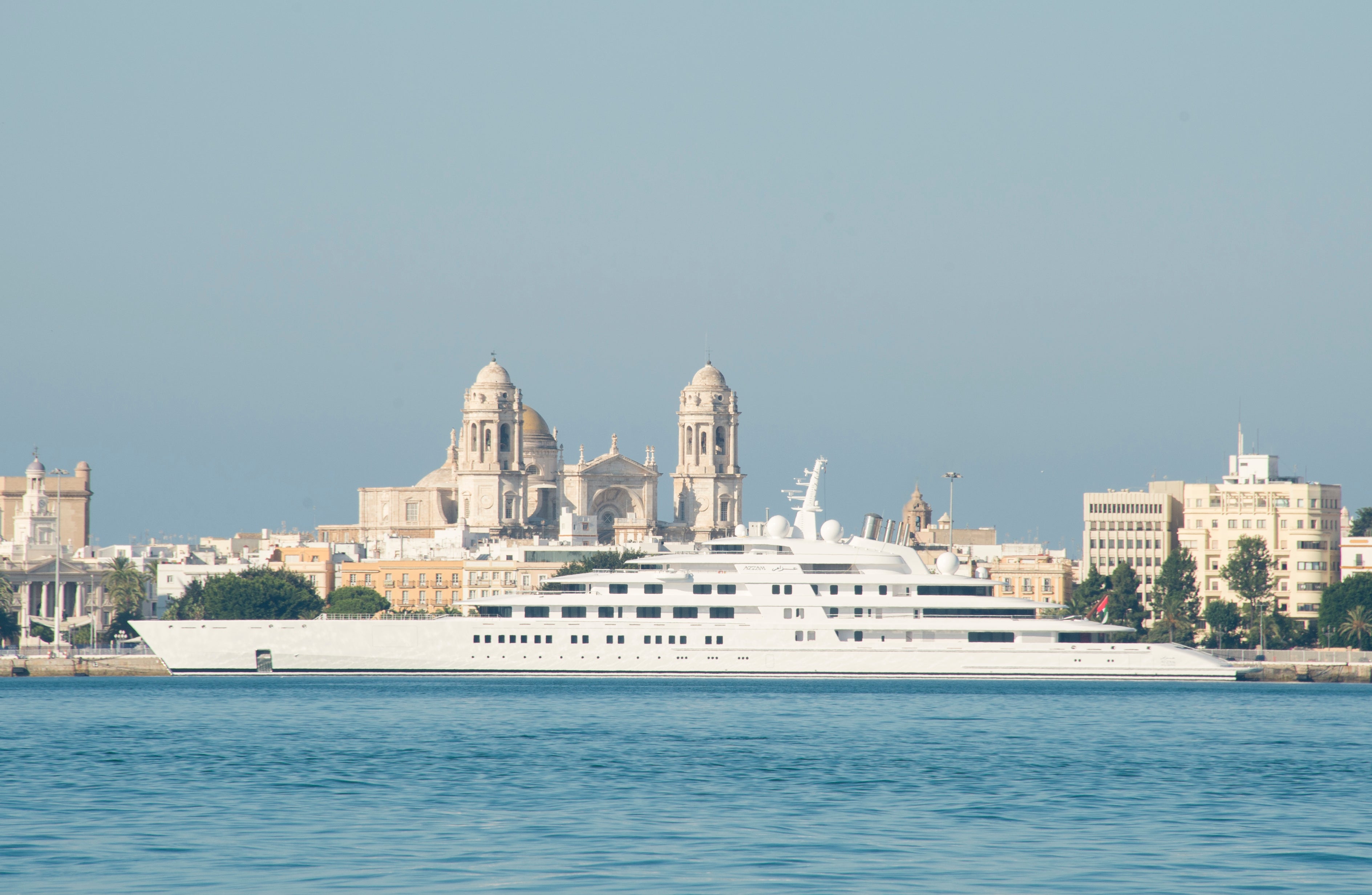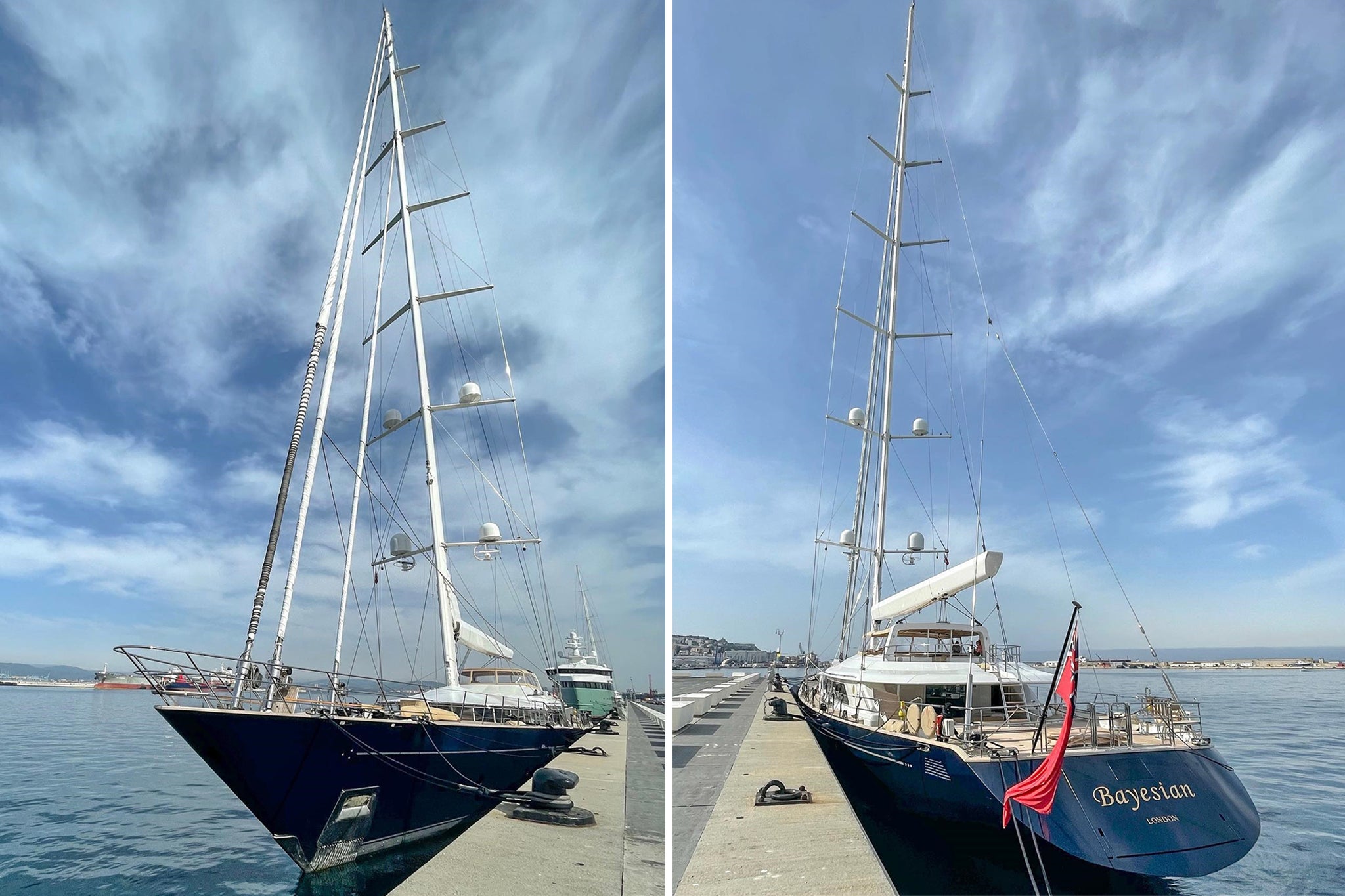Giant masts, moon pools and pole explorer pods: How the world of yachts got supersized
The sinking of Mike Lynch’s ‘unsinkable’ sailing vessel was not only a heartbreaking tragedy, but also gave us a rare glimpse into the superyachting fraternity. Here, Boat International’s Lucy Dunn looks at a group that is both secretive and innovative, and asks how such a high-spec sailing yacht could have sunk at all...

Last week’s sinking of the 56-metre yacht Bayesian and the tragic deaths of British tech tycoon Mike Lynch and his guests and boat staff have given the public a glimpse into the rarefied world of superyachts.
From the sheer size of the mast (74 metres, roughly the size of seven two-storey houses stacked on top of each other) to the expense (Bayesian was put up for sale in 2014 with an asking price of $30m, which is around £23m), to the sheer luxury (the interiors were by Remi Tessier, the designer behind Claridge’s new penthouse), it’s a world few people normally get to see.
There are currently 12,626 superyachts on the water around the world with 1,166 superyachts in build or on order. If you have been to a Greek island this year, or maybe the Amalfi coast, you may have glimpsed them coming in and out of harbours and wondered who owns a yacht like that. Or who can afford to charter a yacht like that – which have an average price of around £180,000 a week.
While you may think of glossy influencers and A-listers, the superyachting fraternity is where millionaires are sorted from the billionaires from the centi-billionaires; the 0.001 per centers. Rarely will you find a celebrity with the financial clout to afford a yacht owned by Lynch, these are generally under-the-radar industry titans who don’t have household names.
So, what exactly makes a superyacht super? According to Boat International, where I work, it can be applied to any boat, motor or sailing yacht which is over 24 metres in length. Size, in the superyacht world, is everything – and yachts are getting bigger all the time. Indeed, our data arm BoatPro shows that the average length of a new-build yacht is now 39.2 metres, up from 38.5 metres last year.
Currently, the largest yacht in the world is the motor yacht Azzam – at 180.6 metres, almost two football fields in length and triple the size of Lynch’s Bayesian. For owners, yachts can be bought “semi-custom” (a bit like a new-build house off-plan but on a much grander scale), or “fully-custom” – meaning they’re built from scratch to the owner’s exact specifications.

And it is not a quick process either: it can take up to four years from design stage to completion, with 300 people or more working on each project. All of which might go some way to explaining the mind-boggling price of them.
While this changes according to market fluctuations and demand, a fully custom 100-metre with all the bells and whistles is around £200m. And that’s just for starters. Depending on the size and age of the yacht you’ll need to spend at least 5-10 per cent of the purchase price every year on the cost of maintaining and operating it (so, in this case, £20m on crew, fuel, tax, insurance, harbour fees).
Some owners like to recoup some of their running costs by turning their yacht into a mini hotel business and chartering it out. A commercially successful boat (neutral interiors, jacuzzi, lots of executive toys) will pick up several charters a year, covering the traditional charter beats of the Med in summer and the Caribbean in winter.
The 85-metre yacht Bold, for example, is equipped with an outdoor cinema, helipad, teppanyaki grill, inflatables, water skis – a snip at £665,000 a week.
While many prefer to keep a low profile, other yacht owners like fashion designer Tommy Hilfiger aren't so shy, and love to use their yacht to entertain (in Hilfiger's case, Kris Jenner of Kardashian fame). But more often than not, owners are super-private. (Lynch was one of these owners who liked to keep things low-key.) Often even the building of the yacht can be wrapped in a cloak of secrecy, and the engineers and craftspeople working on them won’t know who the owner is.

Unlike a car, yachts don’t depreciate in value quite as sharply. The caveat to this is that you need to keep it in pristine condition. This takes work: one thing that is true on Netflix hit Below Deck – crew really do clean cracks between floor tiles with toothpicks.
Keep on top of maintenance and your yacht will last 70 years or more. Christina O, the iconic superyacht once owned by shipping giant Aristotle Onassis and wife Jackie O, is still going strong at 81 years old. She was recently listed for sale for €90m (£68m).
You will need at least a crew of 20 for your 100-metre yacht. Not made-for-TV crews, but ones with professional qualifications, who you would trust to handle your multimillion-pound bit of kit.
Good captains are very sought after and can name their price. Sailing guests to exotic parts of the world is just a tiny part of the job: you have to plan safe routes, book berths in marinas (you’re looking north of €117,000 – around £99,000 – for the Monaco Grand Prix week), manage crew, handle copious paperwork and organise repairs and yard visits.
It’s not just a case of popping it into a local garage for a service – which explains why guests must take off their shoes before stepping on board to protect the precious teak decking.
And unlike other status symbols like supercars or precious watch collections, you can’t just moor a superyacht and forget about it until your next fancy holiday. They need constant attention – as the US government found to their cost when they seized Amadea, a 106-metre superyacht owned by a Russian oligarch and discovered they needed to pay out $7m (£5m) a year in maintenance.

This is why superyachts become such passion projects, beyond whether they are worth it or not. Owners don’t just own them, they put their hearts and souls into them. And this is where the fun happens.
Because despite the tacky “gold taps and bling” reputation that blights the industry, many owners are, on the contrary, super-creative with their superyachts: cue underwater “Nemo” lounges, indoor gardens, waterfalls, snow rooms, padel courts, IMAX cinemas… imaginations have no limits.
Innovation is at the heart of the industry and is very bespoke according to need. Some owners prefer the cut and thrust of sail over motor and a closer experience of the sea.
Some want a vessel that can circumnavigate the globe so they can really see the world. Bayesian, for example, was built to go places and her sistership Rosehearty (an almost identical yacht built by the same yard) has been taken around the globe multiple times in all weathers without a hitch.
Some owners get their yachts built with sturdy “ice class” hulls so they can visit the Poles. These are called “explorer yachts” and they have laboratories for visiting scientists, personal submersibles, James Bondesque “moon pools”, openings in the hull for subs to dock, and so on.

Sometimes an explorer yacht is not big enough to handle everything an adventurous owner wants to do – which is where support vessels (secondary yachts used to store kit such as seaplanes and snowmobiles) come in.
Why have one yacht when you can have two?
Some forward-thinking owners put their cash behind investigating greener alternatives to traditional diesel engines. The world’s first hydrogen-powered superyacht, Project 821, which is 119-metres long, reportedly hit the water this June. Project Zero, a “zero fossil fuel” sailing yacht with the ability to harvest wind, thermal and solar energy launches in 2025.
There has been a lot of speculation about what caused the tragedy with Bayesian. Superyachts have been known to have accidents, but rather than sink in storms, they run aground or catch fire (lithium batteries have been cited as a culprit in some cases). Often, due to the length of time passed and complex technical reports released by investigators, we never find out the cause.
It’s now over to investigators to discover how an “unsinkable” yacht sank last week. The facts are: Bayesian was built by Perini Navi, a respected shipyard specialising in sailing yachts based in Italy, which is the world epicentre of shipbuilding. Day in and day out an army of 30,000 engineers, architects and designers that work in these yards pride themselves on unparalleled craftsmanship, using sophisticated naval architecture technology to push boundaries and produce incredible feats of engineering.
The world of superyachts may be a world you and I will never be part of, but as this week’s tragic news has shown, there is so much more to it than you think…
Boat International Media is a luxury lifestyle publishing company. Find out more here

Join our commenting forum
Join thought-provoking conversations, follow other Independent readers and see their replies
Comments